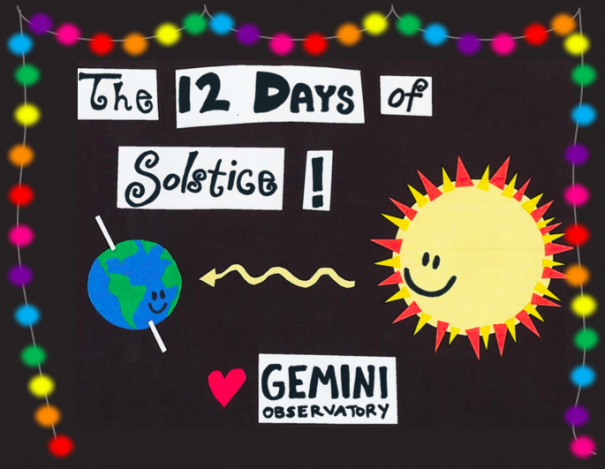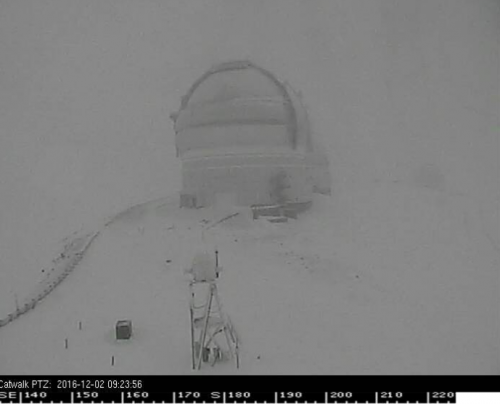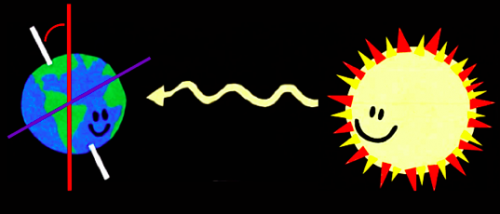- Date: 10 Dec 2016
- Comments: (0)
- Categories: For Everyone, Fun Stuff
Welcome to Gemini’s 12 Days of Solstice! This is a joyous countdown to the longest, or shortest (depending on which hemisphere you live in) day of the year! Visit our blog each day from December 10 – December 21 for Gemini-themed crafts, cartoons, playlists, videos and much, much more.
Day 1: The Reason for the Season(s)
Greetings from wintery Gemini North on Maunakea of the Big Island of Hawai‘i with snow, clouds, closed roads and frigid temperatures…
… and greetings from summery Gemini South on Cerro Pachón in Chile, with clear skies, easy driving and “balmy” temperatures.
What’s the Reason for the Season(s)?
Seasons occur because our planet does not rotate “standing” straight up and down. As pictured in our “12 Days of Solstice” logo, Earth rotates on an axis (white line) that is tilted 23.5° off of a line that is perpendicular to our orbit (red line).
As the Earth orbits the sun, our axis remains fixed in space, thus the northern hemisphere (above the purple equator line) and the southern hemisphere (below the purple equator line) switch off being angled toward, or away, from the Sun. This angle is what dictates how much direct sunlight each hemisphere receives.
Direct sunlight is light that shines on a surface at close to a right angle. At this angle, the most light strikes the Earth’s surface and the surface warms. Whichever hemisphere is angled toward the Sun receives more direct sunlight and experiences summer, while the opposite hemisphere experiences winter. That is why the southern hemisphere is enjoying summer and the northern hemisphere is in the midst of winter (as is demonstrated by the weather on Maunakea now!).
A common misconception is that the cause of our seasons is our changing distance from the Sun. This is incorrect! It is true that Earth’s orbit about the Sun is not circular; the true shape is an ellipse. However, the Earth’s closest approach to the Sun, our perihelion distance, occurs when the northern hemisphere is experiencing winter – January to be exact!
Next time someone asks about the reason for the seasons, remember that it’s the tilt of our planet’s axis which causes differing amounts of direct sunlight! Thank you axis, couldn’t have done it without you 😉
Don’t forget to check back tomorrow for the next installment of Gemini’s 12 Days of Solstice countdown!










